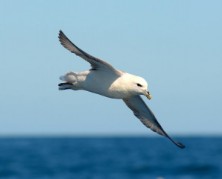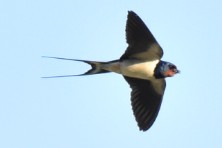To be able to fly
Reports



At this time of year one of my grandchildren, when he was very small, explained to his mother that he did not want any presents from Santa this year he just wanted to be able to fly like a bird. While I am not sure how his mother dealt with his serious request, I can understand it. Birds are fascinating and very obvious. Many are noisy, the long call of the Herring Gull, the alarm call of a Blackbird as it bounds away, the explosive song of the diminutive Wren, and the piping of Oystercatchers. Many are colourful, including the familiar birds like Blue Tit, Goldfinch and Robin. But the stand-out feature of birds, with a few exceptions, is that they can fly.
Fly. It never ceases to amaze me. The small Coal Tits moving expertly between feeders, Swallows swooping over fields collecting insects, Kestrels hovering in the sky, Gannets plunge diving, migratory geese passing overhead in skeins, Fulmars gliding effortless over the waves, the amazing aerial food pass between male and female Hen Harriers, the examples are endless, and they do fly so well.
I know the theory of flying, of lift and thrust and drag but it just seems like magic. Birds are built to fly with many adaptations, like strong light bones, powerful flight muscles, super-efficient lungs and feathers, a real wonder of evolution. Feathers. Light, waterproof and tough. Great insulators and overlapping them together you get wings with their pattern of primary, secondary and tertial feathers. Feathers I have written about before in a previous article. It is available here
There are many books on the subject of birds flying, like Birds in Flight, The Art and Science of How Birds Fly by Carol L Henderson published by Voyageur Press but just go out, look at the birds and marvel at being able to fly .


